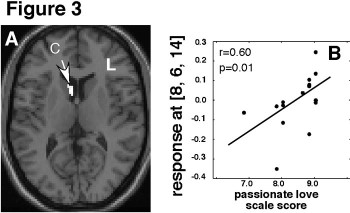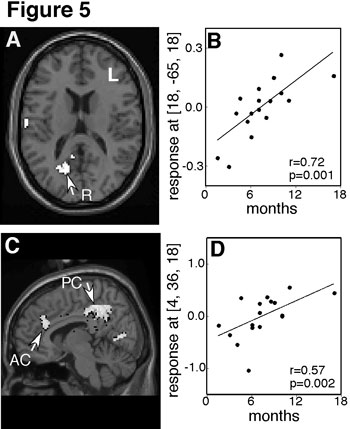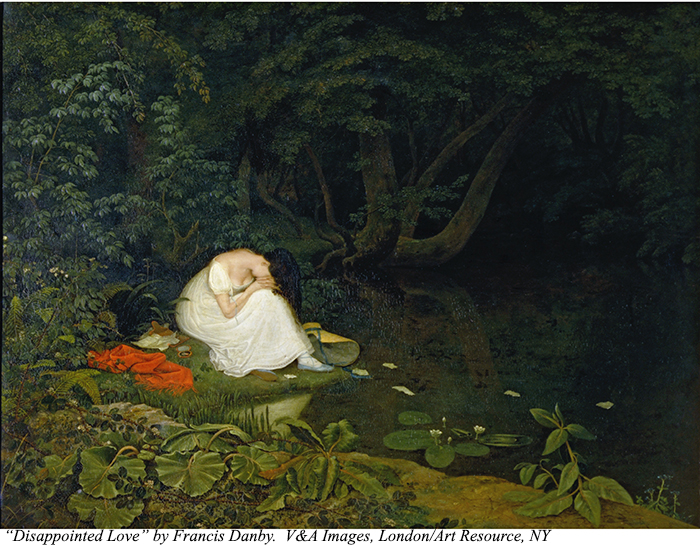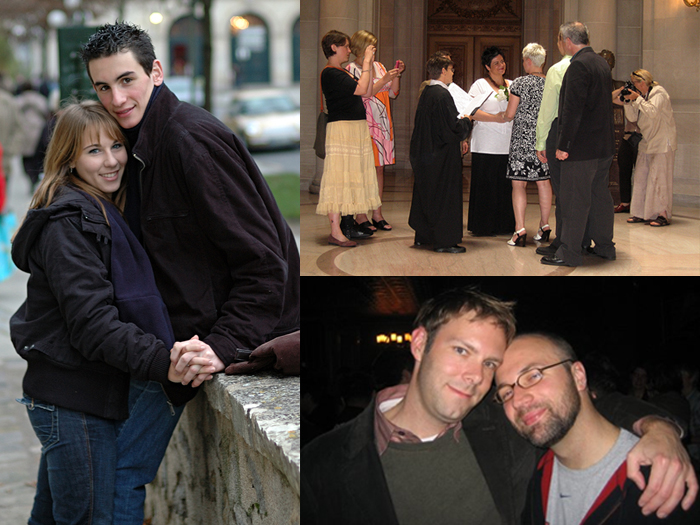
C stands for Caudate.L stands for Left side.
Scores on the Passionate love scale correlated with activity in the Caudate/striatum
Interestingly, the degree of passion that our participants reported that they felt actually correlated with the degree of their activity in a few important brain regions. In short, what these subjects said they felt was an accurate report of what was actually happening in their brain! Self-reports are a cornerstone of study in the field of psychology, but they have always been hindered by the rather obvious question, “How do you know your subjects are telling the truth?” This is one of the first times ever that scientists have been able to take the results of these questionnaires and correlate them to physiological data, which is a measure independent of what they are saying. The correlation here was high.
We discovered this when we compared what we had found in the brain of each participant with their individual scores on the Passionate Love Scale. Those with higher scores on this self-report questionnaire also showed greater activity in the Caudate as they looked at the photo of their beloved. With one noticeable exception: the person in the graph whose response is at the bottom scored a high 8 on the Passionate Love Scale but recorded very little activity in the Caudate. Had he/she talked herself into being in love? Nevertheless, Graph B shows this otherwise positive correlation: lovers reporting intense romantic passion also showed this passion in the brain.
It’s always a great moment for scientists when two of their forms of inquiry, in this case a questionnaire and brain activity, show the same results. In our case, it’s a clear sign that this brain region is central to the feelings of romantic passion.
We replicated this correlation when we studied people who had been rejected in love, and also among those who were in love long term.
NEXT






